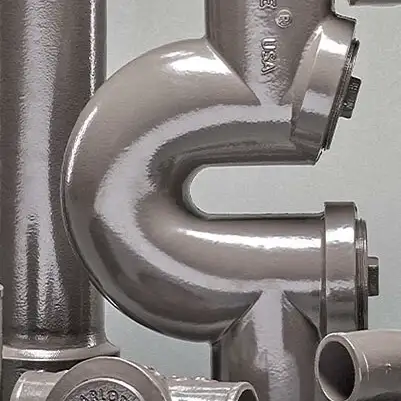As a plumbing professional, I’m often asked whether brass fittings can be safely used with black iron pipes. The short answer is yes—but with important considerations. While these materials are chemically compatible for most water and gas applications, factors like galvanic corrosion, thread sealing techniques, and system pressure requirements must be carefully evaluated.

1. Why This Question Matters
Brass and black iron are both common in plumbing and HVAC systems. Black iron is often used for gas, steam, and hydraulic applications. Brass offers corrosion resistance and machinability. But when you mix different metals, concerns arise—will they corrode faster, leak, or violate code? Let’s explore.
2. Material Compatibility
2.1 Chemical & metallurgical overview
-
Brass is a copper-zinc alloy—semi-ferrous.
-
Black iron is carbon steel with a protective coating.
-
When in direct contact, any dissimilar-metal system risks galvanic corrosion, but only if an electrolyte is present.
2.2 Real-world practice
-
Brass fittings are routinely used on steel or cast-iron hydronic heating and gas systems.
-
Professional tradespeople report decades of trouble‑free operation with no elevated corrosion.
3. Codes & Standards
3.1 International Fuel Gas Code (IFGC)
-
2021 IFGC section 403.9.5: fittings on steel/wrought-iron pipes may be steel, copper alloy (including brass), or wrought‑iron.
-
2015 IFGC section 403.10.4: confirms the same compatibility.
3.2 National Fuel Gas Code (ANSI Z223.1 / NFPA 54)
-
Permits brass fittings on black iron gas piping when properly rated.
3.3 Industry standards
ASME, MSS, ASTM, API define materials, pressure ratings, and testing protocols. Brass and malleable-iron fittings must meet relevant standards such as ASME B16.3, ASTM A197.
4. Corrosion & Galvanic Effects
4.1 Fundamentals
-
Galvanic corrosion occurs in a galvanic cell: two metals + electrolyte + electrical path.
-
In gas piping, there’s no continuous water layer—so risk is low.
4.2 Electrochemical series
-
Brass and iron are fairly close on this series, reducing risk.
-
Higher-risk combos include copper and steel.
5. Pressure Ratings & Performance
-
Black iron Schedule 40 fittings: ~150 psi ambient; higher with Schedule 80/160.
-
Brass fittings used must match pressure and temperature ratings.
-
Always verify through manufacturer data and certification.
6. Installation Best Practices
-
Use proper thread sealants rated for gas (e.g., yellow PTFE tape, pipe dope).
-
Ensure threads are clean and well-aligned.
-
Leave flex connectors some slack to reduce stress.
-
Paint or galvanize outdoor black iron pipes to prevent rust—galvanized or painted.
-
Pressure-test after installation per NFPA or local code.
7. Case Study: Residential Gas-Line Install
Background: Homeowner wanted a 3/4″ black iron pipe to a portable generator.
Challenge: Outdoor exposure, mixing metals, safety.
Solution:
-
Installed black iron line under soffit, painted rust-resistant.
-
Connected brass ball-valve and flex hose rated for outdoor gas use.
-
Sealed threads, left slack in flex hose.
-
Pressure-tested system successfully to 3 psi.
Outcome: 3 years no leaks, no corrosion issues.
This aligns with forum consensus that brass and black iron work well in gas applications.
8. Comparison Table
| Property | Black Iron Pipe | Brass Fitting |
|---|---|---|
| Material | Carbon steel | Copper-zinc alloy |
| Use Cases | Gas lines, steam, water, hydraulics | Valves, connectors, unions |
| Pressure Rating | 150–500 psi (Schedule 40–80) | Must match steel spec |
| Corrosion Risk | Rusts if unprotected | Corrosion-resistant |
| Galvanic Risk | Low with brass in dry gas service | Low, similar nobility |
| Code Compliance | NFPA 54, IFGC approved | Listed for use on steel systems |
| Installation | Heavy, needs threads | Machinable, easy threading |
| Cost | Lower | Slightly higher per fitting |
9. FAQs
1. Can brass and black iron pipes be directly joined?
Yes—per IFGC and NFPA, brass is allowed on steel pipes. Use proper thread sealant and clean threads.
2. Will brass fittings corrode faster than steel when mixed?
Not in gas applications—no water means low galvanic risk. Industry reports show decades of compatibility.
3. Are there code restrictions for brass on black iron?
IFGC sections 403.9.5 (2021) and 403.10.4 (2015) permit copper alloys, including brass.
4. What about pressure limitations?
Be sure brass fittings meet or exceed pressure rating of steel pipe (e.g., 150 psi for Schedule 40).
5. Any special maintenance needed?
Protect steel with paint or galvanize outdoors. Use gas-rated sealants. Periodic inspections suffice.

